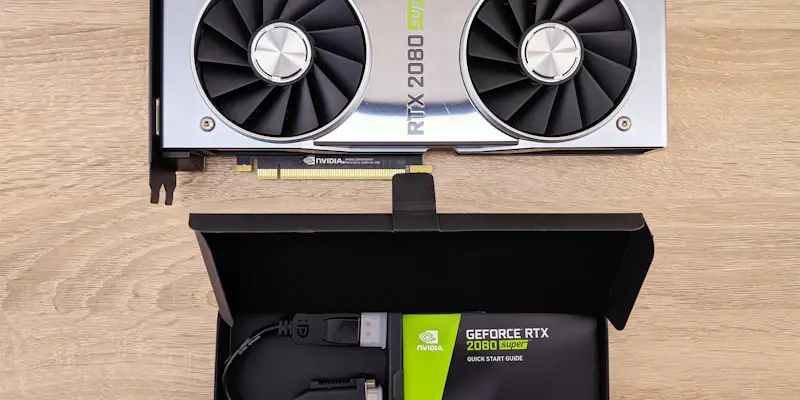Nvidia, the pioneering semiconductor company, is making waves in artificial intelligence (AI) by announcing its latest innovation, the Jetson Thor, set for release in early 2025. This cutting-edge, compact computer is specifically designed to enhance the functionalities of humanoid robots, highlighting Nvidia’s ambitions to dominate the robotics sector—a field it considers vital for future growth. Amidst rising competition from industry stalwarts such as AMD, Intel, and emerging Chinese players, Nvidia continues to assert its dominance in AI chip technology with its high-performance graphics processing units (GPUs). However, recognizing the need to venture beyond its traditional strongholds, Nvidia is diversifying its portfolio to tap into burgeoning markets driven by AI integrations. As applications in cloud computing, autonomous vehicles, and generative AI increase the demand for AI chips, Nvidia encounters complex challenges such as supply chain constraints and geopolitical tech rivalries, underscoring the necessity to explore new territories.
Jetson Thor: Engine for Next-Generation Robotics
The launch of Nvidia’s Jetson Thor is poised to transform the field of humanoid robots with its unparalleled AI processing power and energy-efficient design. This robust platform will empower robots to execute complex functions such as real-time object recognition, natural language processing, and autonomous navigation. Already a leading force in AI-powered robotics, Nvidia’s Jetson platform will undergo significant enhancements with Jetson Thor, providing vastly improved performance metrics. Industries ranging from healthcare to manufacturing and logistics stand to benefit from these advances, propelling the global adoption of AI-driven robotics. The energy efficiency and compactness of Jetson Thor mean that humanoid robots can be deployed in diverse environments, performing tasks previously considered too intricate for automation.
Nvidia’s strategy extends beyond just releasing a high-powered AI chip; the company aims to create a holistic platform that seamlessly integrates AI training software with the requisite hardware for robotic systems. Nvidia’s CEO, Jensen Huang, has often remarked on the transformative possibilities of robotics in automating repetitive tasks, increasing operational efficiency, and addressing labor shortages in crucial sectors. By forging strategic partnerships with leading robotics firms and academic institutions, Nvidia is fostering a collaborative ecosystem geared toward the research and development of next-generation robotic systems. This cohesive approach ensures that Nvidia’s technology serves as the backbone for future advancements in the robotics sphere, driving innovation at every level.
Broadening Horizons Beyond Traditional Markets
Diving into the robotics industry permits Nvidia to transcend its conventional markets such as gaming, data centers, and the automotive sector. Projections indicate that the robotics industry could surpass $150 billion by 2030, spurred by rapid advancements in AI, automation technologies, and sophisticated sensors. Nvidia’s extensive expertise in AI and chip design places it in a strategic position to capitalize on this anticipated growth, potentially allowing the company to shape the future of robotics as it did with other sectors. The venture into robotics signifies a bold step towards new opportunities, ensuring Nvidia’s influence continues to expand in the evolving tech landscape. Nvidia’s commitment to innovation and technological evolution places the company at the forefront of driving transformative changes in the robotics industry.
Nevertheless, the journey through the nascent and challenging robotics industry is fraught with hurdles such as high operational costs and intricate technical barriers. To succeed, Nvidia must make its innovative solutions both more accessible and affordable, all while contending with tech giants like Alphabet, Amazon, and Tesla, which are similarly investing heavily in robotics and AI technologies. Continuous innovation, industry collaboration, and strategic expansions are essential for Nvidia to maintain its competitive edge. By surmounting these hurdles through strategic initiatives and partnerships, Nvidia aims to pioneer a revolution in robotics, ultimately redefining automated technologies as we know them.
Strategic Vision and Future Impact
Nvidia, the trailblazing semiconductor giant, is making significant strides in artificial intelligence (AI) with its latest innovation, the Jetson Thor, slated for release in early 2025. This state-of-the-art, compact computer is engineered to enhance humanoid robots, underscoring Nvidia’s aim to lead the robotics sector, which it views as crucial for its future growth. Facing increasing competition from established players such as AMD, Intel, and new Chinese competitors, Nvidia remains a leader in AI chip technology, thanks to its powerful graphics processing units (GPUs). To stay ahead, Nvidia is expanding its product range to tap into emerging markets fueled by AI advancements. The growing demand for AI chips in cloud computing, autonomous vehicles, and generative AI presents opportunities and complex challenges, such as supply chain issues and geopolitical tech rivalries. These factors highlight the pressing need for Nvidia to explore new domains and adapt to the rapidly evolving tech landscape.

